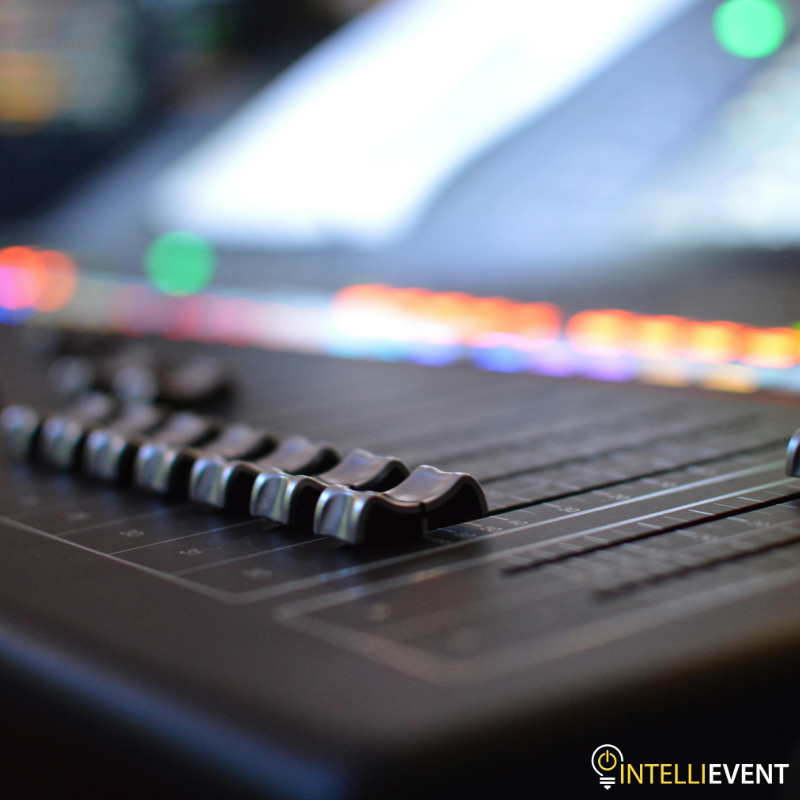Step-by-step guide on budgeting for audio visual charlotte nc
Wiki Article
Comprehending the Incorporation of Audio Visual Innovation in Today's Educational Environments
The assimilation of audio-visual technology in academic setups has actually transformed the teaching and discovering procedure. Educators now have access to tools that provide to various learning designs, boosting trainee involvement and cooperation. However, the unification of these technologies offers both chances and obstacles. Recognizing exactly how to properly carry out these tools is crucial. What strategies can instructors use to optimize the advantages of audio-visual innovation in their classrooms?The Advancement of Audio-Visual Technology in Education
As academic needs advanced over the decades, audio-visual modern technology went through substantial makeovers that improved the understanding setting. Devices such as movie projectors and slide programs were the key ways of incorporating visual elements right into class. These very early modern technologies given teachers with the capacity to present info dynamically, yet they were restricted in access and interactivity.With the development of videotape recorder in the 1970s, class started to incorporate recorded lessons, expanding the scope of instructional resources. The introduction of desktop computers in the 1980s more changed this landscape, permitting the production of multimedia discussions and interactive knowing experiences.
The rise of the web in the 1990s noted a crucial moment, enabling real-time access to a wealth of audio-visual materials. Today, digital tools such as interactive white boards and online learning platforms remain to enhance the instructional experience, fostering engagement and partnership amongst learners.
Benefits of Audio-Visual Devices for Diverse Knowing Styles
Audio-visual tools play a necessary role in catering to diverse discovering designs by boosting aesthetic learning and improving auditory engagement. By including pictures, videos, and sound, these technologies produce an even more comprehensive instructional atmosphere. This multifaceted approach enables educators to resolve the diverse choices and demands of students effectively.Enhancing Visual Discovering
Engagement in the discovering process is significantly enhanced via the usage of audio-visual tools, catering to various finding out styles. These tools, such as video clips, infographics, and interactive discussions, give visual stimulations that help comprehension and retention. Visual learners, specifically, take advantage of the unification of pictures and computer animations, which can simplify complex principles and improve understanding. Additionally, audio-visual sources can show real-world applications, making finding out a lot more pertinent and appealing. By integrating color, movement, and noise, instructors can develop a vibrant understanding atmosphere that captures pupils' interest and promotes deeper cognitive connections. Inevitably, the strategic use audio-visual modern technology not just sustains visual understanding but also enhances the overall educational experience for varied students.Improving Auditory Engagement
A considerable advantage of including audio-visual devices in education is their capability to boost acoustic engagement amongst pupils. These tools, which incorporate multimedia presentations, podcasts, and interactive audio elements, satisfy various learning styles, particularly profiting auditory learners (audio visual charlotte nc). By incorporating sound and narrative, instructors can produce immersive experiences that record trainees' interest and enhance understanding. This engagement is vital, as it fosters a much deeper understanding of the product and promotes retention. Additionally, audio-visual tools can facilitate collaborative knowing atmospheres, motivating pupils to join discussions and share their understandings. Ultimately, the incorporation of audio-visual technology not just sustains auditory interaction yet also improves the overall instructional experience, making finding out more dynamic and reliable for all pupilsEnhancing Interaction Via Interactive Learning

Additionally, gamification aspects, such as quizzes and simulations, can improve inspiration and retention, making finding out more delightful and efficient. These strategies not just promote cognitive involvement but also accommodate varied learning designs, guaranteeing that all trainees can take part meaningfully. As an outcome, interactive knowing atmospheres promote a feeling of neighborhood and belonging, ultimately causing boosted academic results. Through the combination of audio aesthetic technology, educators can change standard class into vivid spaces where students flourish and proactively form their academic journeys.
Linking Theory and Exercise With Multimedia Resources
Multimedia resources function as an important link between academic principles and useful application in academic settings. By improving engagement, promoting collaborative discovering experiences, and sustaining diverse learning styles, these tools create a more comprehensive and dynamic knowing atmosphere - audio visual charlotte nc. This approach not just fosters deeper understanding however likewise prepares trainees for real-world obstacles
Enhancing Engagement Via Multimedia
Interaction in instructional setups greatly increases when teachers integrate multimedia resources into their training approaches. Making use of videos, podcasts, and interactive presentations enhances the discovering experience, enabling students to link with the product on numerous levels. Multimedia resources satisfy various learning designs, giving aesthetic, acoustic, and kinesthetic stimulations that can hold pupils' interest much more properly than traditional lecture techniques. Additionally, these sources can simplify complicated concepts, making them much more accessible and unforgettable. By incorporating multimedia, instructors can develop a dynamic classroom atmosphere that fosters interest and encourages learners. Inevitably, the strategic use audio-visual technology offers to connect the space in between theoretical understanding and functional application, enriching the academic experience for both trainers and pupils.Helping With Collaborative Knowing Experiences
Many researches suggest that collective learning experiences markedly improve student outcomes when incorporated with multimedia resources. Multimedia tools help with interaction among students, enabling them to participate in analytical and vital thinking collectively. By using video conferencing, collective platforms, and interactive presentations, teachers develop atmospheres helpful to teamwork and shared learning. These technologies allow pupils to interact their ideas effectively and obtain prompt comments, cultivating a deeper understanding of the subject. Additionally, multimedia resources can provide complex concepts in even more digestible formats, advertising discussion and partnership. Because of go this, the mix of joint discovering and audio-visual technology not just enhances the educational experience but additionally prepares students for real-world synergy dynamics, emphasizing the value of participation and collective expertise construction.Supporting Diverse Knowing Styles
While typical training approaches typically cater to a restricted variety of discovering preferences, the integration of audio-visual innovation offers a much more comprehensive strategy to education and learning. By utilizing multimedia resources such as video clips, interactive simulations, and digital presentations, instructors can address numerous finding out styles, including aesthetic, auditory, and kinesthetic. This flexibility permits differentiated direction, making it possible for trainees to engage with material in methods that reverberate with their individual choices. Furthermore, audio-visual devices can promote deeper understanding by providing numerous depictions of complicated concepts. Because of this, students that may battle with conventional techniques can discover different paths to success, cultivating a much more equitable discovering atmosphere that supports academic success for all learners.Challenges in Implementing Audio-Visual Innovation
Although audio-visual modern technology holds terrific guarantee for enhancing instructional experiences, its execution frequently encounters considerable difficulties. One main issue is the monetary concern connected with buying and maintaining such tools, which can strain budget plans, particularly in underfunded organizations. Furthermore, inadequate training for teachers can hinder effective combination, leaving them ill-prepared to make use of the technology fully. Technical issues, such as software application malfunctions and compatibility problems, may likewise interfere with lessons and discourage both educators and pupils. Differing levels of student accessibility to technology outside the class can produce variations in finding out opportunities. Ultimately, the possibility for over-reliance on technology may interfere with important mentor techniques, eventually limiting the educational experience. Dealing with these obstacles calls for a detailed technique, including appropriate financing, professional development, and equitable accessibility to resources, to ensure that audio-visual modern technology can be leveraged effectively in today's instructional settings.Finest Practices for Integrating Technology in the Class

Furthermore, fostering an interactive environment through collaborative devices motivates pupil interaction and participation. Using diverse audio-visual sources accommodates numerous discovering designs, suiting visual, acoustic, and kinesthetic learners. Routinely assessing the influence of innovation on trainee knowing aids teachers refine their techniques and adjust to changing demands. Entailing trainees in the selection of innovation promotes possession and motivation. By sticking to these best methods, instructors can produce a dynamic class ambience that successfully incorporates technology and improves the educational experience for all trainees.
The Future of Audio-Visual Modern Technology in Education And Learning
As class progressively embrace modern technology, the landscape of audio-visual tools in education and learning proceeds to evolve (audio visual charlotte nc). Future developments are anticipated to concentrate on greater interactivity and personalization, permitting educators to tailor finding out experiences to private trainee requirements. Innovations such as increased reality (AR) and virtual truth (VIRTUAL REALITY) will likely provide immersive discovering settings, enhancing student interaction and understanding
In addition, fabricated intelligence (AI) is positioned to play a considerable function in audio-visual technology by providing real-time feedback and adaptive discovering pathways. This assimilation may aid teachers recognize and attend to Get More Information student challenges better. Cloud-based systems will certainly promote easier accessibility to sources and collaboration among students and educators, no matter place.
Along with these technical developments, specialist development for teachers will certainly be vital, ensuring they are equipped to utilize these devices properly. Overall, the future of audio-visual technology in education and learning assures to create more vibrant, comprehensive, and impactful learning experiences.
Frequently Asked Concerns
Exactly How Can Teachers Choose the Right Audio-Visual Tools for Their Classrooms?
Choosing suitable audio-visual devices requires my site teachers to examine their instructional objectives, take into consideration student requirements, evaluate offered innovation, and look for referrals from peers or professionals, guaranteeing tools efficiently enhance learning and involvement within their specific class setting.What Budget Considerations Are There for Applying Audio-Visual Innovation?
Budget plan factors to consider for carrying out audio-visual modern technology consist of initial acquisition expenses, upkeep expenses, training for personnel, and possible software application licensing fees. Furthermore, long-lasting financial investment in updates and substitutes need to also be factored right into financial preparation.Are There Certain Training Resources for Teachers on Audio-Visual Tools?
Several institutions offer training resources for educators on audio-visual tools, consisting of online courses, workshops, and training guides. These resources aim to enhance educators' skills and self-confidence in efficiently integrating technology into their teaching practices.Just how Do We Determine the Effectiveness of Audio-Visual Modern Technology in Discovering?
Gauging the efficiency of audio-visual innovation in finding out includes evaluating pupil engagement, understanding, retention rates, and general academic performance. Studies, evaluations, and empirical research studies can supply important insights right into its effect on instructional outcomes.What Are Usual False Impressions About Audio-Visual Innovation in Education?
Common misconceptions about audio-visual modern technology in education include the idea that it guarantees involvement and discovering end results, along with the assumption that all pupils profit similarly, overlooking specific knowing choices and requirements.Report this wiki page